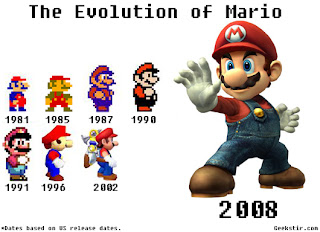Pop culture is the contemporary lifestyle and ideas that pervade the mass population. The media heavily influences our perception of popular culture by showing images and videos of how we should look, how we should act, and how we should feel. The term –popular culture- rose from the original usage referring to the culture of the “low classes” as opposed to high culture of the rich people.
Pop art is simply the result of popular culture. Like pop culture, mass media and corporations heavily influence pop art. Pop art uses the mass produced everyday items to rebel against perspective of fine art. An example of this rebellious nature is the popular image of Campbell’s soup.
A key moment in popular culture is the release of Michael Jackson’s Thriller. The music, the video and dance style paved the way for all modern pop music. “Musicians” such as Lady Gaga, Beyonce, and Enrique Iglesias who are constantly in the billboard top 100 simply follow the outlines created by Michael Jackson’s Thriller.
The unique style and characters of The Simpsons gained a huge following of fervent fans after their debut in 1989. The heartfelt moral and easily connectable characters in each episode revolutionized the archaic thinking of how a cartoon should be and which age group should watch it. Recent cartoons like The Family Guy and American Dad attempt to emulate them.
The Oprah Winfrey Show started in 1986 did not create a tiny trail for all modern day TV talk shows, instead it annihilated the forest, and paved a twelve lane free way. Ellen, Ray, and the other hundreds of talk shows hope to gain the millions of Oprah Winfrey followers and the power and influence she possesses.
It is not possible to talk of popular culture without mentioning Apple and their iPods. These ubiquitous music players brought back Apple from the brink of bankruptcy by selling millions and millions of mp3 players.
Another monumentous in pop culture is Star Wars. This trilogy- only IV, V, VI were created and nothing else- revolutionized movie making. The costumes, space battles and graphics were years ahead of their time and showed how movies should be made.
Released in 1981 as Jumpman, Mario revolutionized the gaming industry. A testament to this epic game and series are the numerous games released in the 30 year lifespan, all based on the original.
Romeo+Juliet exemplifies the ideas and images of pop culture. Popular culture and art infused in the movie introduce the current population to the 500 or more year old love story. The movies swift pace similar to MTV, corporation feud between the Capulet and Montague families, and the usage of guns and cars as substitutes for swords and cars respectively support Baz Luhrmann's conversion of Romeo and Juliet to modern times.
Baz Luhrmann highlights Juliet as a lifeless and reserved figure in his adaptation of William Shakespeare’s Romeo and Juliet. Unlike her lover, Romeo -played by Leonardo DiCaprio- who is extremely active and emotional, Dane’s Juliet contrasts with the fast pace of the movie with her stillness and quietness. In her essay, “Closed in a Dead Man’s Tomb: Juliet, Space, and the Body in Franco Zeffirelli’s and Baz Lurhmann’s Films of Romeo and Juliet.” Lindsey Scott argues Juliet’s elegant stature is similar to Petrarchan’s heroine instead of Shakespeare’s vision. Furthermore, she argues Juliet “becomes a visual replica of ... porcelain figures of angels and cherubs.” Dane’s Juliet slows the movie’s quick pace with her inert statue-like figure, which focuses the audience’s attention on her still body rather than the swift energy of the movie. Juliet’s motionless figure on the balcony while watching the fireworks and her conserved reaction to news of the marriage to Paris further affirms this notion. Baz Luhrrman’s Juliet is a passive and lifeless figure who absorbs the quick energy of the movie causing the audience to lose focus.


